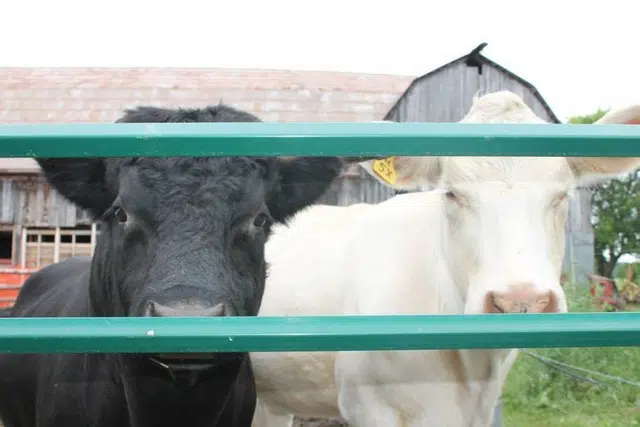
The next time you sit down to a steak dinner in just about any restaurant in The Ottawa Valley you are pretty much assured that the beef you are about to enjoy has been processed right here in the region by Reiche Meat Products out of Rankin.
Owner/Operator Sarah Bennett says that in boom times farmers would be booking their butchering appointments a year in advance as the “high season” is typically between September and December. Timing for the farmer and the abattoir is everything, explains Bennett and turnover of finished product depends on a number of factors:
These days, with fewer beef producing farms in The Valley than ever before and the demand for beef as high as it’s ever been, Bennett says that accommodating all of the producers in the region during that brief annual period is no longer feasible:
Like just about every other business around the globe following COVID, Reiche has had to adapt to a change in the buying habits of the average beef consumer who became more concerned than ever before with “Buying Local”. These were the boom times for Reiche when they could hardly keep up with the demand.
Nowadays farmers don’t need to concern themselves with selling local in order to garner the best price so they ship their herds off to places such as Cookstown where the leg work of selling their beef to the general public falls upon the distributor and not the farmer. It costs them more to have their product made market ready so they can charge more. It becomes simple math and it leaves places like Reiche struggling to compete.
It’s difficult to go toe to toe with some of the biggest buyers in Canada such as Maple Leaf and Cargill who routinely buy their product from large stock yards centres like the one in Cookstown. This is where the distinction between Provincially regulated processing plants and Federal plants comes into play when determining turnaround time and pricing for final product. Bennett talks first about the federal options:
Bennett goes on to explain that Reiche, as a Provincially regulated abattoir, adheres to a different set of regulations which sets it very much apart from the much larger Federally run concerns. The difference in the regulatory factors is what gives Reiche it’s local identity:
The main difference is that when a farmer opts to have their product processed at a larger plant, they are not looking to market their beef locally. It’s more of a “one and done deal”. Alternatively, having a farmers product processed by the likes of Reiche is a pretty good sign that the farmer is going to market locally and therein lies the benefit to both farmer and consumer. Simply put:
It becomes a choice that the farmer needs to make when determining what is more important; making more money by having the larger entities buy and market their beef or settling with a fair bit less profit but offering consumers what is truly a “Stable to Table” option which many swear by these days. The bottom line, according to Bennett ,is the simple fact that demand outweighs supply and that drives up prices:
As population continues to increase and the number of beef farms decreases, there appears to be little that can be done to stem the increasing prices of beef whether marketed locally or not. The final word from Bennett is not what one would call a promising harbinger for the future:
For more information on Ontario beef please go to www.ontariobeef.com.
(Written By: Richard Evans)

